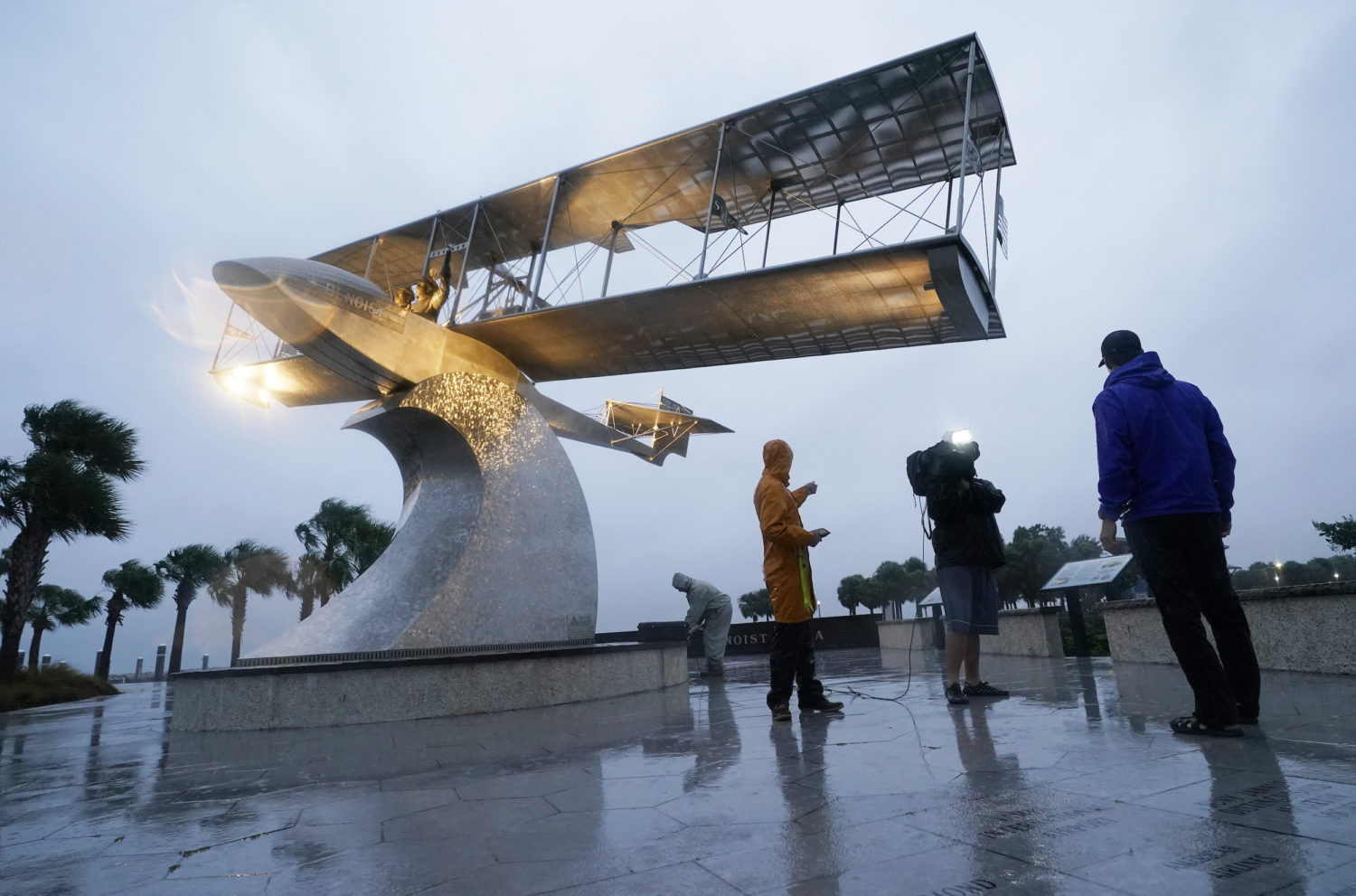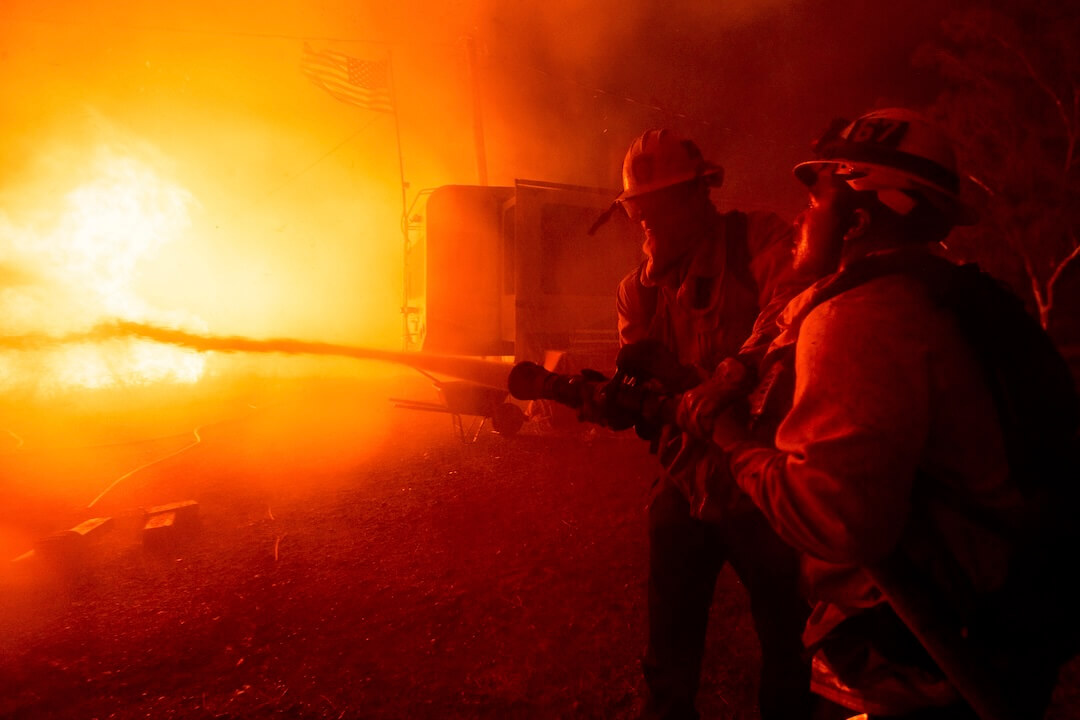 Covering COVID-19 is a daily Poynter briefing of story ideas about the coronavirus and other timely topics for journalists, written by senior faculty Al Tompkins. Sign up here to have it delivered to your inbox every weekday morning.
Covering COVID-19 is a daily Poynter briefing of story ideas about the coronavirus and other timely topics for journalists, written by senior faculty Al Tompkins. Sign up here to have it delivered to your inbox every weekday morning.
We Floridians are so thankful to our journalists who have tracked Hurricane Ian nonstop for more than a week. We are blessed to have skilled professional meteorologists in Tampa Bay’s TV market.
This is a moment when we realize the importance of the institutional knowledge of the meteorologists, anchors, reporters, producers and news executives who have been in this market for a long time. Some of our anchors have been covering storms for decades. They know every cove and creek and how to pronounce Kissimmee and Homosassa.
The TV stations also partnered with radio stations and — this is important — the TV people remembered that radio listeners cannot see the screen, so the TV meteorologists explained in detail what they were showing.
There are some others who are heroes in my eyes. Of course, the army of utility workers and out-of-state rescue crews, and local law enforcement members (including dispatchers) who calmly and professionally respond when they must want to scream.
In some places, hotels jack up their rates when emergencies arise. But for Hurricane Ian, Rosen Hotels & Resorts offered “distress rates” across some of its properties for Florida residents “to have a safe and affordable place to stay as they ride out.” Some of their rates were as low as $69 — half the price or less compared to usual — and, in an emergency, were made pet-friendly and provided free Wi-Fi. BRAVO.
Florida Restaurant & Lodging Association provided nonstop updated info to Expedia to help people find an evacuation hotel with open rooms. I saw a lot of rooms right before the storm cut to less than half-price all over Florida. Bravo, again. All states should do this when they face an emergency.
And cell companies announced they would provide unlimited data during the storm.
While it is popular to criticize our elected leaders, we come to appreciate them in emergencies when they intricately know their state, city or county; when they speak calmly, act proactively and have prepared themselves by knowing about such things as surges, power grids, counterflow traffic plans, barometer readings and how to document damage for insurance claims.
I have not seen a single incidence of political bluster in the last 48 hours. That is saying something in a Florida election season.
Lessons learned: changes made
Here is another thing you should check on in your state, even if you don’t live in Florida.
Florida officials claim 100% of nursing homes and assisted living facilities are in compliance with a state requirement that they have backup power generators and fuel. That state requirement followed a 2017 debacle where nursing home residents in Broward County were stuck in a nursing home after a storm and 12 people died.
The state law says nursing homes and larger assisted living facilities are required to have enough fuel to run generators for 72 hours. Assisted living facilities with fewer than 17 beds are required to have two days’ worth of fuel. Nursing homes also must have the equipment they need to control indoor temperatures for 96 hours after an outage and maintain a temperature of no more than 81 degrees.
I found it interesting that Tampa police chief Mary O’Connor warned that during a local state of emergency, burglaries and thefts would have enhanced penalties. “A burglary would normally be a second-degree felony, and it will be upgraded to a first-degree felony,” she said. I looked up a West Palm Beach law firm’s website that explained the enhanced penalty law for emergencies:
In order for the charges to be enhanced, prosecutors must be able to show the suspect or suspects knew Florida was under a state of emergency.
Typically, the charge is enhanced by one level during a state of emergency. What was a misdemeanor can become a third-degree felony, or a charge that is typically a third-degree felony becomes a second-degree felony.
Burglary and theft charges involving stolen items that are valued from $5,000 to $10,000 are upgraded to second-degree felonies. Depending on the circumstances, charges for stolen items valued up to $20,000 can also result in second-degree felonies.
If the item or items in question that are valued from $100 to $750, the accused can be charged with a third-degree felony.
Outside of a state of emergency, stolen property valued at $100,000 or more is considered grand theft, which can result in a first-degree felony.
After the storm, the most dangerous period
Most injuries and deaths occur after a hurricane passes. Portable generators are among the deadliest consumer products because they emit carbon monoxide. ProPublica, NBC News and the Texas Tribune explored why generators pose such a problem, even while serving vital functions:
The devices can emit as much carbon monoxide as 450 cars, according to federal figures. They kill an average of 70 people in the U.S. each year and injure thousands more, making them one of the most dangerous consumer products on the market.
As climate change and the nation’s aging infrastructure combine to cause worsening storms and longer power outages, experts warn that more people are turning to portable generators every year — a trend that benefits manufacturers’ bottom line while putting more people at risk.
The federal government identified the danger of portable generators more than two decades ago. But regulations that would force companies to reduce generators’ carbon monoxide emissions and make the machines safer have been stymied under a statutory process that empowers manufacturers to regulate themselves, former government officials and consumer advocates say. That has resulted in limited safety upgrades and continued deaths, NBC News, ProPublica and The Texas Tribune found.
The generator industry has resisted attempts by the Consumer Product Safety Commission (CPSC) to require the devices to emit less carbon monoxide. Instead, the industry proposed a cheaper, voluntary safety upgrade in 2018, suggesting that manufacturers install carbon monoxide sensors that automatically shut engines off when high levels of the colorless, odorless gas are detected in an enclosed space. Three years later, not all manufacturers have adopted the change, and safety advocates say the shut-off switches fall short of what’s needed to protect consumers.
The Consumer Product Safety Commission’s data (page 43 of this report) shows 1,300 carbon monoxide deaths over the last two decades that are linked to portable generators. That, the CPSC says, is likely an undercount.
Only 17% of the people who died from carbon monoxide emitted by generators had operational carbon monoxide alarms nearby. In some cases, the alarms didn’t have batteries. In other cases, people didn’t understand what the alarms were warning.
Generator-caused deaths are highest after hurricanes, even higher than winter power outages, according to the CPSC research of 2011-2021 data.
The CPSC points to new research:
In its new report, Fatal Incidents Associated with Non-Fire Carbon Monoxide Poisoning from Engine-Driven Generators and Other Engine-Driven Tools 2011-2021, CPSC estimates that about 85 consumers die in the U.S. each year from CO poisoning caused by gasoline-powered portable generators.* The report also shows that African Americans are at higher risk, accounting for 23 percent of generator-related CO deaths, nearly double their estimated 13 percent share of the U.S. population.
Most generator deaths (81%) occur in residential locations. CPSC’s study also found that the top three reasons for using a generator among the reported fatal incidents were weather-related power outages, power shut-offs, and attempts to provide power to temporary locations, such as cabins, campers and trailers.
Here are two things to keep in mind: Portable generators should only be used outdoors, the CPSC says, and should be at least 20 feet away from the home, with the exhaust pointed away from windows and doors.
More than half of newer portable generators come with sensors that shut the generator off if carbon monoxide levels get too high. Watch a video that explains how carbon monoxide monitors work on a generator.
Homes at risk around America
As those of you beyond Florida watch the storm unfolding where I am in Florida, it might be worth reminding your audiences how many homes in the U.S. are at risk from storm surge.
Don’t forget Puerto Rico
Even while journalists did their work covering Hurricane Ian, 300,000 of our fellow citizens in Puerto Rico are still without electricity from a storm more than a week ago. Here on the mainland, we have a habit of moving on to the next disaster while the island struggles. See this headline from El Nuevo Día:
The best-case scenario, the power company says, is that one in 10 Puerto Ricans will still be without power by the end of the day today. But that number could actually be as high as one in four.
We’ll be back tomorrow with a new edition of Covering COVID-19. Are you subscribed? Sign up here to get it delivered right to your inbox.











